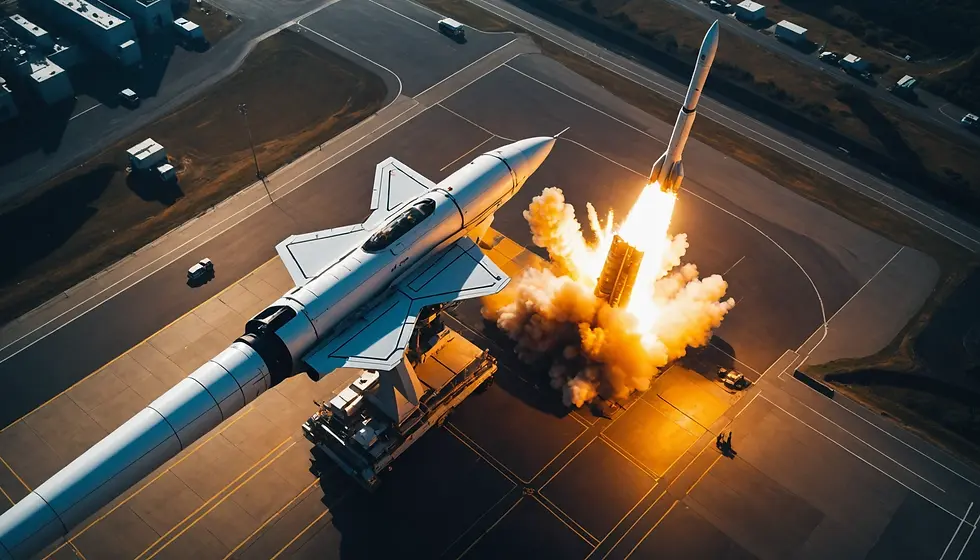Exploring the Limitations of Iron Dome: Is it Suitable for the Continental United States?
- Roy Tin
- Mar 7
- 4 min read
The Iron Dome is often celebrated for its impressive capability to intercept and destroy short-range threats, particularly rockets and artillery shells. Developed by Israel, it has gained notoriety for its effectiveness in regions facing constant missile threats. Yet, the pressing question remains: can this system effectively protect the continental United States? This blog post will examine the limitations of the Iron Dome and why it might not be the best fit for U.S. defense needs.
The Iron Dome: A Brief Overview
The Iron Dome is a state-of-the-art missile defense system that focuses on neutralizing short-range threats like rockets and mortar fire. Created by Rafael Advanced Defense Systems, it combines innovative radar technology with advanced interceptors. When a threat is detected, the system assesses the trajectory to decide if interception is necessary. If a threat poses a risk, an interceptor is launched to destroy the threat before it reaches its target.
The Iron Dome has demonstrated its success in various conflict scenarios, particularly in Israel, where it has intercepted over 90% of the rockets aimed at populated areas since its deployment in 2011. This capability has become a crucial element of Israel’s defense strategy.
While the Iron Dome shines in localized conflicts, several challenges arise regarding its application in the vast landscape of the continental United States.
Geographic and Demographic Challenges
A major limitation of the Iron Dome in the U.S. context is the immense geographical size of the nation. Unlike Israel, which is compact with a high population density, the United States covers over 3.8 million square miles and features diverse regions with varying populations.
To provide effective missile defense coverage, a sufficient number of Iron Dome batteries must be deployed across the country. For example, Israel operates around 10 to 15 Iron Dome batteries to cover its population centers, but replicating this scale in the U.S. could be prohibitive in terms of cost and logistics. The dispersed population in the U.S. complicates the timely interception of threats, making every minute count during an attack.
In addition to geographic considerations, the U.S. boasts a unique mix of critical infrastructure, including urban centers, transportation hubs, and military bases. Each of these locations would require a customized defense approach. A uniform solution like the Iron Dome lacks the flexibility to adapt to the plethora of conditions and threats present in different states.
Threat Landscape Variability
The threat environment for Israel starkly contrasts with that of the U.S. Israel primarily contends with short-range threats from neighboring adversaries, while the continental U.S. might face long-range ballistic missiles or cyber-attacks that can disrupt critical infrastructure.
For instance, missile threats from countries like North Korea or Iran could involve intercontinental ballistic missiles (ICBMs), which can travel thousands of miles, far exceeding the Iron Dome’s interception capabilities. According to the U.S. Department of Defense, ICBMs can reach targets within 30 minutes, significantly limiting the response time for any defensive system based solely on short-range interceptors.
Moreover, the U.S. military has access to advanced missile defense systems like the Terminal High Altitude Area Defense (THAAD), which is specifically designed to counter long-range threats. The Aegis Ballistic Missile Defense system offers additional layers of protection, using a combination of naval vessels and land-based systems. The Iron Dome, while effective in its context, does not fit the larger threat profile the U.S. faces.
Cost-Benefit Analysis
When assessing the integration of the Iron Dome into U.S. military infrastructure, cost is a significant factor. The financial outlay for a single Iron Dome battery can exceed $50 million. If multiple batteries are needed to cover vulnerable areas, the cost could quickly escalate into the billions.
Moreover, the expense per interception is notably high. Reports indicate that the cost of each interception can range from $30,000 to $100,000, particularly during high-intensity conflicts when numerous threats are launched. This rapid accumulation of costs makes the Iron Dome a less attractive option compared to other defense mechanisms that could offer a better return on investment.
Decision-makers must consider the overall effectiveness of the Iron Dome versus other defense strategies that might deliver stronger protective benefits. Given the high costs involved, focusing on a multi-layered defense strategy may be a more effective use of national defense budget allocations.
Technological Adaptations Required
For the Iron Dome to be effective in the U.S., significant adaptations would likely be necessary. Scaling the technology to manage a larger geographic and threat scope would involve research and development investments.
These adaptations would include engineering interceptors with extended ranges while enhancing radar systems capable of identifying a broader array of threats. Such developments could be time-consuming and resource-intensive, indicating that other existing systems may provide more efficient solutions.
Integrating the Iron Dome into current military frameworks would also demand extensive logistical support, creating potential hurdles that could slow response times during critical scenarios.
Final Thoughts
While the Iron Dome stands as a remarkable advancement in missile defense technology, its applicability within the continental United States is hampered by various limitations. Factors such as geography, the diverse threat landscape, cost implications, and required technological adaptations all underscore the complexities of this issue.
To strengthen its missile defense strategy, the U.S. might find it more beneficial to invest in a layered defense approach that leverages established systems tailored to meet the nation's unique requirements. While the Iron Dome's success is undeniable, it may not be the ideal solution for the vast and varied landscape of U.S. defense needs. As global threats shift, the methods to defend against them must continue to evolve.




Comments